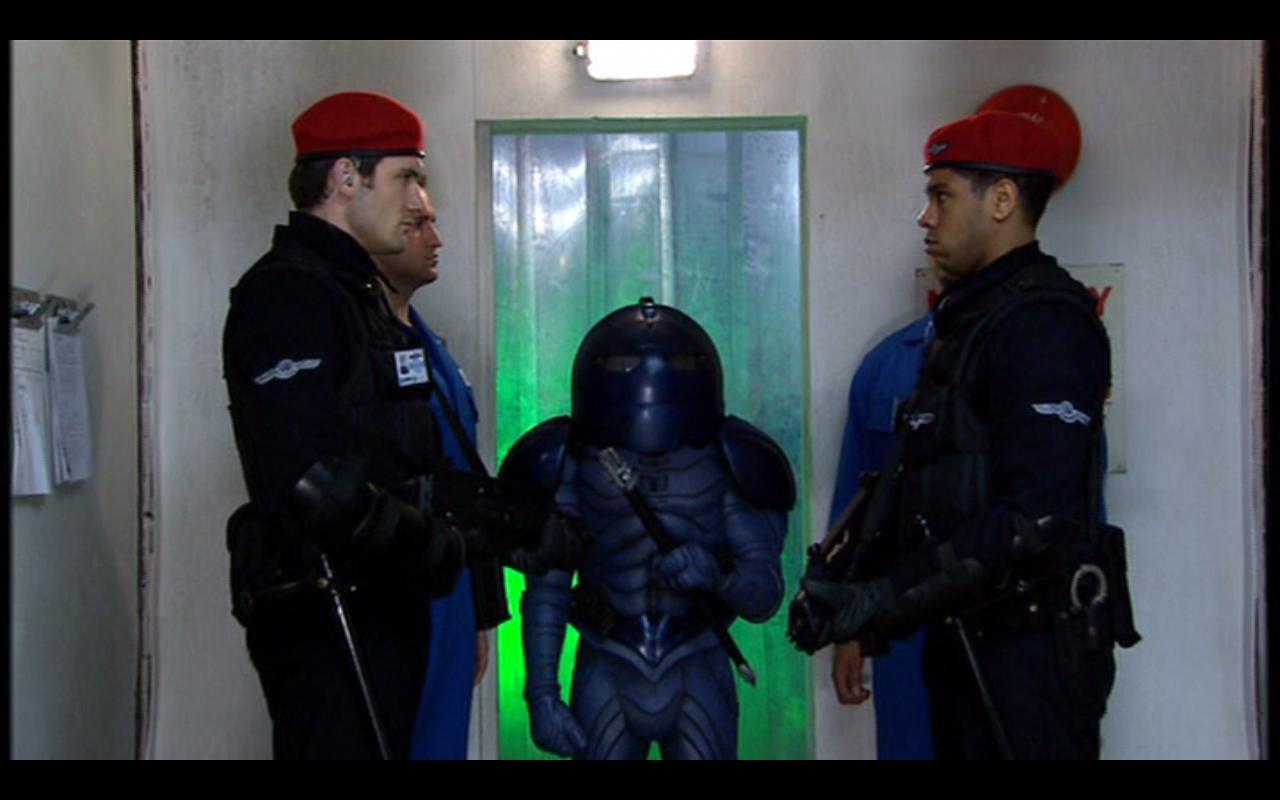 |
| Commander Staal gives orders to his hypnotized minions. ("The Sontaran Stratagem") ©BBC |
There are also lots of jokes scattered throughout, which are really lovely. The scene where the Doctor says goodbye to Donna is both touching and funny, and I utterly adore the part where the Doctor and Jenkins rush out of the jeep before ATMOS explodes, which does so with a tiny fizzle ("Oh, was that it?" says the Doctor, somewhat disappointedly). It's also great to see how Donna's granddad Wilf reacts to Donna's stories, and then to the Doctor when he finally shows up at the Noble house. Oh, and some more offhand references to past stories: Martha is described as having a weak thorax, just like Sarah Jane in The Time Warrior, and the Doctor describes the UNIT of the '70s ("Or was it the '80s?" he wonders, for the handful of fans still holding on to late '70s/early '80s dating) as being more "homespun" than what we see here, which is true. UNIT here is a lot more disciplined (and, frankly, intimidating) than they were during the Pertwee era. Oh right, and Martha Jones is back, working for UNIT and having called in the Doctor to help with this ATMOS device.
Actually, this leads to the one major problem with "The Sontaran Stratagem" (well, this and the fact that everything looks purple for some reason -- but that's clearly a design decision), and that is the character of Luke Rattigan. He's bratty and snotty and basically the television stereotype of the wunderkind, which makes him intensely unlikeable as a result. (Still, at least he's intended to be unlikeable -- so we're still ahead of Wesley Crusher and the rest of his type.) As such, it's rather entertaining to watch the Doctor get the better of him: "If only that was possible," Rattigan says, after the Doctor points out he could colonize a new planet with the technology he's developing. "'If only that were possible.' Conditional clause," the Doctor corrects him.196 Rattigan tries to get his own back, but it comes off as weak and petulant, as he tries to criticize the Doctor's use of "ATMOS System". "It's been a long time since anyone said 'no' to you, isn't it?" the Doctor says mildly (and, somewhat ironically, using the wrong verb -- "isn't" instead of "hasn't"). This is the weakest part of the episode, and one does wonder a bit what's going to happen in the second part.
But so far, "The Sontaran Stratagem" has been an entertaining, solid episode. The only real hesitation here is that "Daleks in Manhattan" (Helen Raynor's last Doctor Who story) was much the same way and then turned into a damp squib in its second half, "Evolution of the Daleks". But if this story can avoid the sins of the past then they'll be in good shape.
196 The Doctor is technically correct, but Rattigan is actually just part of the linguistic trend that's getting rid of the subjunctive were in counterfactuals. Or, in other words, having was there is becoming increasingly acceptable. For instance, I'll bet you didn't even notice it until the Doctor pointed it out.